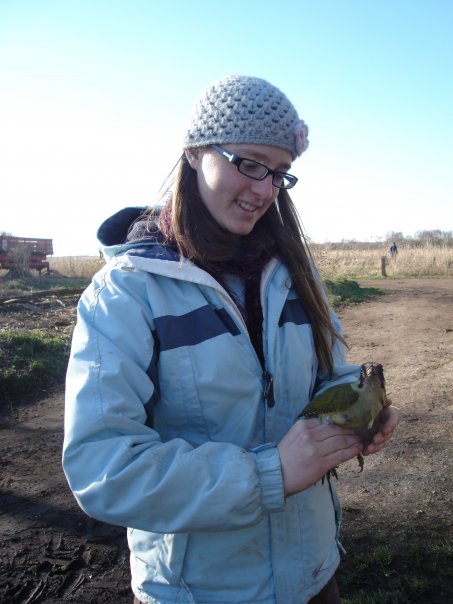I signed up for this trip not knowing a thing about what I'd be doing, but very excited because it contained a lot of words I didn't know the meaning of (grotting, fleyging..). What we actually ended up doing more than met my expectations, with the results that I am totally in love with certain species of seabirds!
The main ringing was split into roughly 3 categories. Puffin slope ringing, rock ringing and top-o-the-island ringing.
As Puffins were the main aim of the trip, I'll deal with them first. We set up lines of nets at different set heights throughout the main colony, catching in total around 600 birds. Puffins are funny little creatures. They have extremely strong beaks - just a little nip from them is enough to draw blood (my hands are testament to this) - and very little wings. To give a sense of proportion, they have wings the size of a blackbirds but are around 3 times heavier! So when they fly, they not only have to beat exceptionally hard, they also have to spread their feet out besides their tail to give them extra lift! They also make this bizarre groaning noise, both in their burrows (which you can hear if you listen carefully enough) and in the hand.
Also see http://news.bbc.co.uk/1/hi/scotland/8156866.stm for news of one of the birds we caught!

The other sort of ringing we did a lot of was rock ringing - my term for scrambling over and under boulders in order to try and find Razorbills, Guillemots and Shags (either adults or chicks). Unfortunately the Guillemots were still on eggs for most of the time we were there, and so we couldn't ring many of them (if you approach a Guillemot ledge they get flustered and whilst moving to the back of the ledge to 'escape', may accidentally knock off an egg, which obviously we tried to avoid at all costs!). This provided quite a challenge, as one area of the rock slope had this huge line of Guilly colonies, just about where we wanted to go down to the beach to have lunch, so we had to go all the way around to avoid disturbing them.
Instead we caught many Razorbills, and many Razorbill chicks. Razorbills are, I can tell you, aptly named. They have exceedingly sharp bills and an attitude to match. Their chicks are the complete opposite - small fluffy grey things that sit and cry in crevices. Their crying noise is all pervasive in the colony, it invades your ears. Even when you know there is not a razorbill chick around you, you can still hear them, and once I could have sworn I was hallucinating razorbill chick cries in my tent (it then turned out that I wasn't, thankfully, and that there was some sort of mass exodus/fledging event in the colony). They then go through an ugly down moult phase, and start to gain the adult plumage. This is when they are the best; lovely and fluffy, beautifully smart yet cannot bite too hard, no matter how much they try! The funniest thing about razorbill chicks is they think if they cant see you, you cant see them. So a razorbill chick that is out on a ledge might move further back into a crevice, but one with its head in a crevice and its fluffy bum stuck out thinks it is perfectly safe! Many razorbill chicks have one of their parents nearby though, so reaching out to pick one up may still result in hand injuries...

The third common species encountered whilst rock ringing is the Shag. Shags are absolutely amazing! Beautiful iridescent green plumage, with many of the coverts outlined in black. Adults have one of two noises - females 'hiss' and males 'gronk'. The gronk is a particularly incredible sound, and they have an amazing head shaking that goes with it, that makes shags look almost prehistoric. Shag chicks, though, are some of the funniest creatures alive. They are grey and floppy, and really very messy (their nests smell and their feet are often covered in all sorts of muck), but once they reach a certain size/age, they start to try and imitate the adults - they produce little, high pitched gronks, complete with the head shaking!!

Other birds caught during the expedition include Eider(!), and Fulmar.
Thanks to Jim Lennon for organising the trip, and all the team members (you know who you are). Also to the Panton Trust for providing me with a grant to go!
